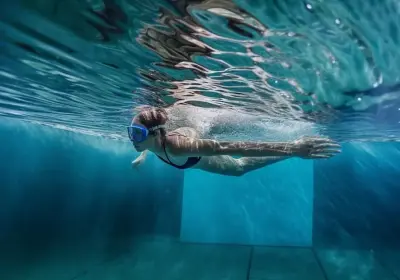What is cross triathlon?

- 1. Understanding Cross Triathlon: A New Wave in Endurance Sports
- 2. The Components of Cross Triathlon
- - Swimming in Open Waters: The First Leg
- - Navigating Off-Road Cycling: The Second Leg
- - Conquering Trail Running: The Final Leg
- 3. Preparing for a Cross Triathlon: Training and Strategies
- - Developing Swimming Strength and Endurance
- - Techniques and Tips for Off-Road Cycling
- - Trail Running: How Different Terrain Affects Your Run
- 4. Essential Equipment for Cross Triathlon
- - Choosing the Right Swim Gear
- - Off-Road Bike Selection and Maintenance
- - Trail Running Shoes and Gear
- 5. Health and Safety Considerations in Cross Triathlon
- - Importance of Proper Nutrition and Hydration
- - Understanding Your Limitations: Avoiding Overtraining and Injury
- - Environmental Risks and How to Safely Handle Them
- 6. Advantages of Participating in Cross Triathlon
- - Physical and Mental Benefits
- - Building Endurance and Resilience
- - Community Connection and Camaraderie
- 7. Frequently Asked Questions About Cross Triathlon
1. Understanding Cross Triathlon: A New Wave in Endurance Sports
Diving headfirst into the dynamic world of endurance sports, the rising phenomenon of Cross Triathlon has been capturing hearts worldwide. This variant of the traditional triathlon blends open-water swimming, off-road biking, and trail running into one adrenaline-pumping competition. Born out of the modern athlete's thirst for challenging their boundaries, Cross Triathlon continues to evolve, pushing endurance sports into uncharted territories. As we gear up to deep dive into the nitty-gritty of this fascinating sport, be prepared to navigate through open waters, traverse off-beaten cycling paths, and conquer terrains on foot. The journey won't be easy, but as cross-triathletes would tell you, the fiercer the challenge, the greater the rewards!
- The Concept of Cross Triathlon
Cross triathlon combines the three exhilarating sports of open water swimming, off-road cycling, and trail running into one robust and challenging event. Differing from a traditional triathlon, a cross triathlon takes everything off the beaten path and into the wild. It embraces the unpredictable elements of nature and integrates them into the race's intense segments. It's a remarkable variation that appeals to thrill-seekers and nature lovers, adding a unique thrill factor to the classical triathlon format. Cross triathlon redefines endurance, agility, and resilience, demanding athletes to summon their utmost physical and mental prowess. The concept of this innovative sport isn't only about the race; it's about immersing oneself in nature's raw beauty and unpredictability. So, are you ready to break away from the track and pavement, and dive into the world of cross triathlon? It's not just a race; it's a journey of self-discovery and a test of your limits against demanding terrains and elements. To truly embrace the essence of this incredible endurance sport's concept, one must not only prepare physically but also build a strong connection with nature — after all, she is your ultimate adversary and companion in this rugged race. Embrace the winds, the waves, the trails; taste thrill, resilience and freedom in an utterly new perspective. Welcome to cross triathlon.
- Brief History and Evolution of Cross Triathlon
Delving into the history and evolution of Cross Triathlon, this distinct branch of endurance sports is fairly new on the athletic scene, having emerged in the late 1990s. Its inception is rooted in the Hawaiian Islands, the birthplace of the well-known Ironman Triathlon. The founders, seeking to challenge athletes in a completely unique and rigorous way, veered from the predictable paved paths of traditional triathlons and ventured into the unpredictable realm of rugged terrains and open waters. The first Championship was held in 1996 under the organization of the XTERRA Triathlon series. From the beginning, it was apparent that this sport was not just another triathlon but pushed the limits of agility, resilience, and endurance. Over the years, Cross Triathlon has evolved to become a globally recognized sport. The International Triathlon Union (ITU) held its first Cross Triathlon World Championships in 2011, a testament to the sport's growing popularity. Despite its relatively short history, Cross Triathlon has managed to carve out its niche in the world of endurance sports, continuously attracting athletes who seek to push their boundaries while immersing themselves in the natural environment. Its unique combination of swimming, off-road cycling, and trail running offers a compelling challenge that blends physical prowess with the thrill of adventure. So, are you ready to dive into the dynamic world of Cross Triathlon?
2. The Components of Cross Triathlon
Diving into the world of cross triathlon, it's essential to understand its three main facets or components. The first leg is swimming, often conducted in open, challenging waters demanding not just strength but also tactical wisdom to handle varying currents. Next, off-road biking, the second segment, takes the thrill up a notch. Here, you pedal through unpredictable terrains, dealing with the whims of nature's pathways. The concluding part is a grueling session of trail running, calling for an uphill battle with various terrains. Each component is distinct, presenting unique challenges and calling for specialized skills and training. Endurance, technique, determination, and the will to push beyond boundaries - that's what encapsulates the spirit of a cross triathlon!
- Swimming in Open Waters: The First Leg
Embarking on the first leg of a Cross Triathlon can be both exciting and challenging. This beginning stage involves the adrenaline-fueled rush of swimming in open waters. This is a far cry from the controlled environment of a pool - temperatures can fluctuate, currents can surprise and marine life can add an unanticipated twist. However, this distinctive element is what makes Cross Triathlon so exhilarating. While training for swimming in open waters, it is crucial to embrace a different mindset compared to traditional swimming. Your strategy should enhance stamina to withstand the strenuous nature of open water. It's also imperative to adapt to the unpredictability of open-water conditions, training oneself to be comfortable even when visibility under water isn't ideal. With the right techniques and a clear understanding of the water currents, you can develop your swim strokes to be more efficient and effective in the open water, preparing yourself well for the challenge. The strength, endurance, and mental toughness fostered in this first leg lay the groundwork for the rest of the Cross Triathlon. It's not merely about being a good swimmer; it's about adapting, preparing for the unexpected, and embracing the wild, untamed thrill of the open water. So take the plunge, dive deep, and set the pace for your Cross Triathlon journey.
- Navigating Off-Road Cycling: The Second Leg
Navigating off-road cycling in a cross triathlon isn't just about pedaling; it's an art that requires skill, precision, and a strong understanding of your terrain. Often, you'll find yourself thrown into diverse settings, from rugged mountain paths to slippery, mud-infused trails. It's imperative that you get comfortable with your bike handling skills and develop an almost instinctual ability to anticipate obstacles lying ahead on the path. In other words, one has to be prepared to react quickly and efficiently to changes in the trail. Cyclocross bikes are the preferred choice due to their larger, more robust tires which provide improved grip and a smoother ride on non-paved surfaces. In terms of training, intervals and hill sprints can help build both speed and power. Additionally, core workouts can immensely improve your bike handling skills and stability on challenging trails. Don't underestimate the importance of pre-riding the course; familiarizing yourself with its slippery slopes, sharp turns and unexpected obstacles can give you a valuable advantage during the race. Undoubtedly, the transition from traditional road cycling to off-road biking can seem daunting; it's a gauntlet thrown by nature herself. But with the right attitude, plenty of practice, and a sprinkling of trial and error, you'll soon be able to negotiate those intimidating off-road trails with confidence, agility, and speed. The second leg of the triathlon challenges you, polishes you, but most importantly, it characterizes cross triathlon's very soul in its raw, untamed natural appeal.
- Conquering Trail Running: The Final Leg
Trail running is the final, thrilling leg of a cross triathlon, where participants are tested to their limits as they immerse themselves in nature's obstacle course. Varied terrains such as dirt paths, rocky outcrops, and slippery slopes challenge your agility, balance, and endurance, unlike traditional track running. It's a unique experience, weaving through nature, listening to the rustle of leaves underfoot, and the constant changing scenery providing a welcome distraction from the exertion of the run. Being successful in this leg requires more than just running ability; it demands a mental toughness to push through difficult parts of the trail and a quick decision-making ability in challenging terrains. Incorporating hill repeats, speed work, and long runs on trails similar to race conditions in your training plays a crucial role in enhancing your performance. Regular trail running does not only build strong muscles and improved cardiovascular endurance, but it also develops sharper focus and better running form. Remember, trail running is not about speed. It's about forging a connection with the surroundings, while testing your resilience. Ultimately, the sense of achievement at the end of a cross triathlon isn't just about crossing the finish line—it's about the journey of personal growth, and the skills and perseverance acquired along the trails.
3. Preparing for a Cross Triathlon: Training and Strategies
Eager to dive headfirst into the world of Cross Triathlon? Excellent! But remember, proper training is critical to preventing injury and enhancing performance. Begin with gradual open-water swimming, focusing on sustaining a balanced and efficient stroke. Then, hop on your sturdy off-road bike. Navigate varying terrains to increase your handling skills and strength. Lastly, tie up those trail-running shoes. Practice running on uneven terrain to boost your stamina and agility. Balance is key, so ensure you're proportionately developing strength, agility, endurance, and mental tenacity in all three disciplines. In Cross Triathlon, it's not about mastering one leg, but conquering all three.
- Developing Swimming Strength and Endurance
Training efficiently for the swimming segment of a cross triathlon can significantly improve your overall performance. To develop swimming strength and endurance, start by setting a training schedule that suits your lifestyle and abilities. Starting out slow, focusing on your form and tackling one challenge at a time is key. Remember, cross triathlon's swimming leg is in open waters; this means, unlike training in a controlled pool environment, you'll have to get used to waves, currents, colder temperatures and occasional poor visibility. Incorporate a combination of elements in your training regime, including strength training, aerobic workouts, and platform drill sessions. Switch up between short, intense training sets and longer, slower swims to build your overall endurance. Incorporating dry-land strength training that targets specific muscle groups used in swimming can help improve your swim power. Moreover, it's crucial to practice your breathing technique - knowing when to inhale and exhale can make a significant difference in your swimming efficiency and resistance. And don't forget the importance of mental preparation. Open water can be intimidating, and practising calmness and overcoming fear are essential parts of your training. Finally, having an experienced coach by your side to guide you and offer personalized advice can be invaluable to your cross triathlon swim training. Remember, every swimmer is different, and a customized training approach can help you achieve your specific goals.
- Techniques and Tips for Off-Road Cycling
Cross triathlon won't be complete without its thrilling second leg - off-road cycling. The adrenaline rush that this stage brings is surely unmatched. But to seamlessly sail off this leg, various techniques and tips come into play. Start by acclimating yourself to the course. Pre-riding will give you an idea of what to expect so you can better prepare. Understand that off-road cycling is vastly different from traditional road biking, it requires core strength as you’ll need to stand and maneuver around obstacles rather than sitting consistently. Moreover, it's essential to get to grips with gear shifting. An abrupt or careless shift might lead to painful falls or damaged equipment, so make sure you're mindful in managing your gears. Focus on maintaining a consistent pedalling cadence. It helps save energy and makes handling easier. And what's a ride without a little daring? In off-road cycling, fear can be your biggest nemesis. The key is to let your bike do its job and believe in your cycling skills. Don't let intimidating slopes or sudden turns dampen your spirit. Embrace the unpredictability with every pedal push. Finally, always engage in regular maintenance. A well-kept bike is a smooth ride, after all. So, are you ready for the next off-road adventure?
- Trail Running: How Different Terrain Affects Your Run
Trail running, the final leg of a cross triathlon, is a game-changer that can make or break your performance. Your run will be influenced by a variety of terrains, and each one will test your agility, endurance, and speed. For instance, on rocky terrains or steep hills, it's paramount to focus on maintaining balance and conserving energy. On the other hand, running on forest trails demands more agility, given that you'll be navigating through tree roots and potential obstacles. Mud paths, while slippery and challenging, help develop perseverance and adaptability. 

4. Essential Equipment for Cross Triathlon
When embarking on your cross triathlon journey, having the right equipment is key to both your performance and your safety. For open water swimming, invest in a quality wetsuit and goggles to withstand varying water conditions. It's also essential to have an off-road bike that's sturdy, reliable, and fitted correctly to your body size – don't forget your helmet for safety! Lastly, for trail running, choose shoes with excellent grip and durability to handle any terrain you encounter. Remember, the gear should not only be functional but comfortable too as you'll be pushing your limits in varied environments.
- Choosing the Right Swim Gear
Choosing the right swim gear is an imperative part of preparing for a cross triathlon. It's not only about wearing a swimsuit and goggles, but selecting appropriate equipment that ensures safety, enhances performance, and fosters comfort. Start off by selecting a triathlon suit designed specifically for these events. Tri suits offer flexibility in the water, short drying times once you're cycling, and the necessary padding for the bike and run segments. While choosing goggles, prioritize clarity and a secure fit to avoid blurry vision and distractions. Opt for goggles with a wider field of vision, enabling you to spot buoys and other swimmers in your peripheral view. A good-quality, open water swim-specific wetsuit is another crucial item. These specially designed wetsuits not only keep you warm in cooler waters but also aid buoyancy, helping to conserve core strength. Remember, while selecting these gears, assuring a perfect fit is crucial to prevent chafing or unease during the race. Lastly, you might want to consider a swim cap to keep hair out of your face and reduce drag. By investing time and thought into choosing the right swim gear, you set the tone for your cross triathlon journey.
- Off-Road Bike Selection and Maintenance
When venturing into the world of cross triathlon, your off-road bike selection will be paramount to your success. Traverse through uneven terrains calls for a sturdy bicycle tailored to handle such rigors. A mountain bike with good suspension, wider tires, and lower gear ratios will be the game-changer. The beefier frame and increased traction, courtesy of these features, will ensure better control and balance on off-road trails. Remember that your bike should feel like an extension of yourself, intuitively maneuvering as you dictate. Thus, proper sizing is crucial. Consulting a bike shop for a professional fit can solve this. Equally critical is bicycle maintenance. Crossing streams and muddy paths will give your bike a beating. Regularly cleaning the bike, paying special attention to the drivetrain, can prevent premature wear and tear. Lubricating the chain frequently and checking the brake pads for adequate thickness will save you from unwanted trails trauma. Additionally, keeping the tire pressure at optimum levels will provide for smoother rides over rocky terrains. The cardinal rule is: always inspect your bike before hitting the trails! Remember, a well-selected and maintained bike is not merely a cog in the wheel of your cross triathlon journey, but the very essence of it!
- Trail Running Shoes and Gear
When it comes to trail running shoes and gear, there are several critical considerations to make. Firstly, it's paramount to fit your shoes properly, not just for comfort but also to avoid injuries. You're going to need shoes with ample grip for stability, durable soles to withstand harsh off-road conditions, and adequate cushioning to protect your feet during long runs. It's not just about the shoes, though. The importance of proper running gear shouldn't be neglected. Moisture-wicking clothes, including socks, can keep you dry, reducing the risk of blisters and overheating. Consider investing in a quality running backpack to carry essentials like water, snacks, or a first-aid kit. Don’t forget the need for a visor or sunglasses to shield your eyes from the sun and a headlamp if your trail runs extend into the evening. Remember, your gear can greatly influence your performance, so invest wisely and keep your items in good condition. Are you wearing the right gear? Is it time to upgrade? It's worth wondering if your equipment is helping you cross that finish line, or holding you back.
5. Health and Safety Considerations in Cross Triathlon
Staying safe while pushing your limits should always be a top priority. This is no exception for Cross Triathlon, where the elements of swimming, cycling, and running are a test of not just endurance, but also resilience. It's crucial you take care of your nutritional needs to fuel your body for optimal performance. Staying hydrated is also key to prevent heat stroke and fatigue. Continuing to push beyond your physical limitations may sound inspirational, but it's a sure recipe for injuries. Lastly, be environmentally conscious and understand the risks the outdoors present, like erratic weather or unfamiliar terrain. Ready to dive in? Safety first, always.
- Importance of Proper Nutrition and Hydration
An integral aspect of any successful Cross Triathlon journey lies in maintaining proper nutrition and hydration. As an athlete, you require fuel to propel you through strenuous activities, and there's no denying that Cross Triathlon indeed is a sport that pushes your physical threshold. It calls for a comprehensive approach to nutrition, one that tunes in with each stage of the race. Consuming protein-rich food can help in muscle recovery and regeneration after enduring rigorous bouts of swimming. Carbohydrates, known as the body's primary energy source, can play a pivotal role in keeping you vigorous and vivacious during the challenging off-road cycling phase. Now, hydration is as much crucial as nutrition. Water, as we know, is the building block of our body, and during Cross Triathlon, there's an increased risk of dehydration. Active hydration practices keep your body’s fluid levels in balance, regulating temperature, enabling proper muscle function, and reducing risks of heat-related illnesses. Therefore, as you chart out your Cross Triathlon strategy, your fueling plan should receive equal attention. Remember, it's not just how you train, but what you consume during your training that can be the game-changer in your Cross Triathlon success story.
- Understanding Your Limitations: Avoiding Overtraining and Injury
In the realm of cross triathlon, it is crucial to understand your limitations, thereby helping you to prevent overtraining and avoid potential injuries. Overtraining often manifests as persistent fatigue, decreased performance despite increased training, and is linked with injury risks. It's important to heed the signs your body is sending you, acknowledging that, sometimes, less is indeed more. Listening to your body is a skill that needs to be honed, whether you feel the sting of a developing strain or the burnout from overexertion. Moreover, it’s essential to alternate hard workouts with easy ones and incorporate full rest days into your training regimen. In contrast, failing to do so can lead to injuries that keep you out of the game for weeks or months. Furthermore, don't underestimate the importance of a well-balanced diet and quality sleep in recovery and injury prevention. Remember, cross triathlon is not just about physical resilience but also about mental strength, knowing when to push hard and when to ease up. Over time, understanding your limitations doesn’t spell weakness; on the contrary, it’s pivotal for long-term performance and success in this demanding endurance sport.
- Environmental Risks and How to Safely Handle Them
Participating in a Cross Triathlon not only tests your physical endurance but also demands a keen awareness of the environmental risks involved. One significant aspect unique to this sport is the constantly changing terrain and weather conditions, which could potentially affect your performance and overall safety. Open water swimming, for instance, oftentimes exposes you to unpredictable sea currents and temperatures. Ensuring you adequately acclimate beforehand is a cornerstone to preventing hypothermia and other related risks. Similarly, off-road cycling can pose different challenges - slippery trails, sharp turns, sudden drops, and unseen obstacles. Equip yourself with the skill to swiftly react to these changes and always, wear the necessary protective gear. But it doesn't end there. Even the final leg, trail running, can be treacherous. Rain-soaked routes, rocky paths, and steep slopes could lead to falls and serious injuries. Tread wisely, be vigilant about your surroundings, and ensure you're well-versed in first aid response. To navigate these environmental risks, proper preparation is paramount. Familiarize yourself with the course, pay attention to the weather report, and train in similar conditions where possible. Remember, safety should always prevail over speed. Winning is more about outlasting rather than outperforming. In Cross Triathlon, the battle is more within yourself, pushing your own boundaries and conquering personal goals.
6. Advantages of Participating in Cross Triathlon
Stepping into the world of Cross Triathlon presents a multitude of benefits that transcend the physical parameters of strength and endurance. The sheer tenacity required in tackling all three disciplines cultivates a mental grit unlike any other sport. It pushes you to your limits, sculpting resilience at every stroke, pedal, and step you take. Moreover, the sense of camaraderie experienced within the Cross Triathlon community is a unique spectacle to behold. Every participant, regardless of skill level, shares a common bond in the pursuit of personal growth and adventure. This solidifies Cross Triathlon's position as more than just a sport, but a lifestyle that promotes comprehensive wellbeing and connection.
- Physical and Mental Benefits
Cross triathlon is more than just an endurance sport; it's a journey that brings immense physical and mental benefits. Let's start with the physical advantages. Participating in a cross triathlon challenges every muscle in your body, enhancing your overall strength and stamina. The sport involves swimming in open waters, off-road cycling, and trail running, each of which targets different muscle groups and promotes cardiovascular health. This intense physical exertion also aids in weight management, boosts your immunity, and improves your body’s efficiency. On the mental plane, cross triathlon plays a significant role in enhancing mental toughness and resilience. The rigorous training and the event itself demand a strong mental game, teaching participants the art of perseverance. As they push their limits in challenging landscapes and unpredictable weather, they learn to manage stress, cope with anxiety, and develop a problem-solving attitude. Moreover, the sheer joy and satisfaction of completing a triathlon stimulate the release of endorphins, the happy hormones, leading to better mental well-being. In summary, cross triathlon contributes to a healthier body and mind, making it a rewarding experience that transcends the realm of standard sports. It's not about how fast you get to the finish line but about the incredible journey and human potential discovery along the way.
- Building Endurance and Resilience
Cross Triathlon is not just a physical sport, it's a test of endurance and resilience. Participating in the challenging arena of Cross Triathlon not only builds robust physical strength but infuses the participant with a spirit of tenacity. The ability to persevere through difficult circumstances, pushing past boundaries, and keeping up the relentless pursuit of the finish line, make this sport an excellent training ground for building enduring resilience . The alternating terrains of open water swimming, off-road cycling, and trail running, require diverse types of fitness and mental toughness. Every twist, turn, climb, and dive in the unforgiving route demands your complete concentration and unremitting endurance. As the race challenges your physical ability, it propels your mental strength to new heights. The adversities along the journey become your stepping stones, leading ultimately to immense resilience. Each finish line crossed leaves the participant with an evolved strength and an unyielding spirit, unfazed by the next impending trial. Cross Triathlon is a journey of perseverance, a story of resilience, and above all, a relentless combat with oneself. So, are you ready to push your boundaries, build untold endurance, and emerge as a stronger version of yourself?
- Community Connection and Camaraderie
One of the most cherished aspects of participating in a Cross Triathlon is the sense of community connection and camaraderie that it fosters. The endeavor of embarking on a rigorous endurance sport such as Cross Triathlon is undoubtedly challenging, yet it brings individuals from different walks of life together, united in their quest for strength, vitality, and perseverance. Each participant, whether a neophyte or a seasoned veteran, contributes to a diverse and vibrant community ingrained with mutual respect and support. The camaraderie this sport fosters is truly unique and extends beyond the race itself. A Cross Triathlon event is an opportunity to meet like-minded people who share the same passion for push boundaries. The shared experiences of training, racing, and overcoming the distinctive challenges that this sport presents strengthen the bonds between competitors, turning them into partners rather than rivals. Moreover, the sense of accomplishment when crossing the finish line not only validates your personal dedication and hard work but also signifies your indelible part in this sporting community. The beauty of Cross Triathlon lies not only in the physical endurance it calls for but also the emotional resilience it culminates, fortified by the unwavering support and unity of the community. Ultimately, the essence of Cross Triathlon thrives on 'strength in numbers,' celebrating every journey, every challenge and every triumph together.
7. Frequently Asked Questions About Cross Triathlon
Delving into the captivating world of Cross Triathlon, a plethora of questions may swirl in your mind. Perhaps you're contemplating which Cross Triathlon event best suits you − a budding beginner or an experienced ironman? Well, remember, each event holds its unique charm and challenge. Start with less demanding races, gradually building up your endurance for larger, more challenging events. Now, if you're wondering, "Can I, a novice, dare to dip my toes in this grueling sport?" Absolutely! Cross Triathlon warmly embraces athletes of all skill levels. Yes, every race might test your mettle, but isn't that where the thrill lies? Lastly, the rules and regulations. Not as daunting as you might think! Primarily focusing on maintaining sportsmanship and ensuring everyone's safety, they steer the event towards a rewarding and exhilarating experience. Curiosity piqued? Get set, and dive right in!
- How to Choose the Right Cross Triathlon Event
Choosing the right Cross Triathlon event is a crucial decision that can make or break your triathlon experience. Start by analyzing your fitness level and the amount of training you have undergone. Are you a beginner? Or do you have months of intensive workouts under your belt? If you're a novice, it's advisable to pick an event with a shorter distance, giving yourself the room to adjust to the cross triathlon landscape. Once you've mastered the basics, challenge yourself by opting for longer and more strenuous events. Research each event carefully. Look at the terrain and weather conditions as they play very significant roles in the race. Some prefer events in the warmer season while others revel in the toughness brought about by a cold weather race. Reviewing past participant feedback is also helpful, giving you insights into the organization, the course, and other crucial aspects. Lastly, consider your travel capabilities. Is the event within your accessibility? Or do you have the resources to travel to international events? A correctly chosen Cross Triathlon event can enhance your love for the sport, fostering growth and resilience, which are the very essence of cross triathlon.
- Can Beginners Participate in Cross Triathlon?
Absolutely! Cross Triathlon isn't exclusively for the seasoned triathletes; it's definitely welcoming to beginners too. First and foremost, it's key to understand that everyone commences their journey at some point, and there's no perfect time to get started other than now. As a novice, the idea of tackling a cross triathlon could seem daunting, with its challenging natural terrains and testing environmental conditions. However, don't let this intimidate you. In fact, these elements add to the thrill of the adventure of being a part of such an exhilarating sport. Keep in mind that with the right training, gear, and mindset, you can successfully participate in cross triathlon. Remember, it's all about focusing on your progress and not comparing yourself to others. It's your journey, and it's what makes it unique. Are you drawn by the magic of nature and the call of the wild? Looking for a sport that challenges your physical limits while testing your mental strength? Then don't hesitate, cross triathlon is just for you. Embrace the journey and welcome all it brings - challenges, fun, change, growth, community, and most importantly, discovery of your true potential. So, gear up, train hard, plunge into your first cross triathlon, and relish every bit of it! It's about time you dived into action. Are you ready to embrace the new wave in endurance sports?
- What are the Rules and Regulations?
The rules and regulations of cross triathlon vary on a regional, national, and international level but generally retain some fundamental consistencies to ensure fairness and safety. Decorum and sportsmanship are expected from every participant. In respect to the swimming part, wetsuits are usually allowed but sometimes limited by water temperature. During the cycling leg, helmets are essential, and your bike must be in good working condition. There's no drafting allowed in most races. This means you can't ride directly behind another competitor to gain a wind advantage. For the trail run, personal headphone devices are usually prohibited for safety reasons. It's important to know that ignorance of the rules isn't accepted as an excuse. Penalties for not following the regulations range from time penalties to disqualification. As a potential participant, it is your responsibility to make yourself acquainted with the rules of the particular race. An in-depth read of the competitor handbook or briefings is always a good practice. Don't hesitate to ask if unsure - better safe than sorry, right?
In conclusion, Cross Triathlon, as an evolved endurance sport, offers a new adrenaline rush with a tri-variance involving open water swimming, off-road cycling, and navigating trails. Being prepared with the appropriate gear and training, understanding your limitations, staying healthily hydrated, and nutritionally balanced is as crucial as selecting the right event. The sport invites beginners and pros alike, promising physical and mental gains and a sense of community, despite its challenging nature.
```html
What is a Cross Triathlon?
Cross Triathlon is a variant of the traditional triathlon, composed of swimming, cycling, and running, but the races are performed in open water, off-road terrains, and trails.
How can a beginner prepare for Cross Triathlon?
Beginners can start Cross Triathlon preparation by gradually building strength and endurance for swimming, cycling, and running. It's important to start slow, get comfortable with each activity's techniques, and increase intensity over time.
How to choose the right Cross Triathlon event?
In choosing the right Cross Triathlon event, consider factors like the difficulty level of the routes, distance from your location, availability of training resources, and compliance with the International Triathlon Union rules and regulations.
What essential equipment are needed for Cross Triathlon?
Essential equipment for Cross Triathlon includes swim gear (such as goggles and wetsuit for colder waters), an off-road bike best suited for uneven terrains, and trail running shoes to provide better grip and support on rough trails.
What safety measures should be taken for Cross Triathlon?
Safety measures for Cross Triathlon include being adequately nourished and hydrated, understanding personal limitations to avoid overtraining and injury, and being aware of environmental risks such as weather conditions, water currents and trail hazards.
```


















































Leave a comment